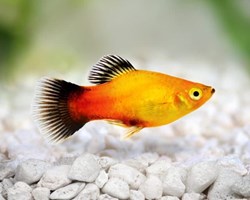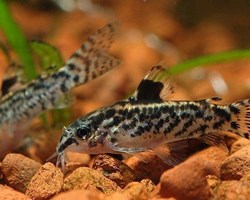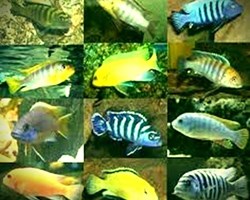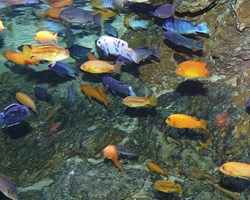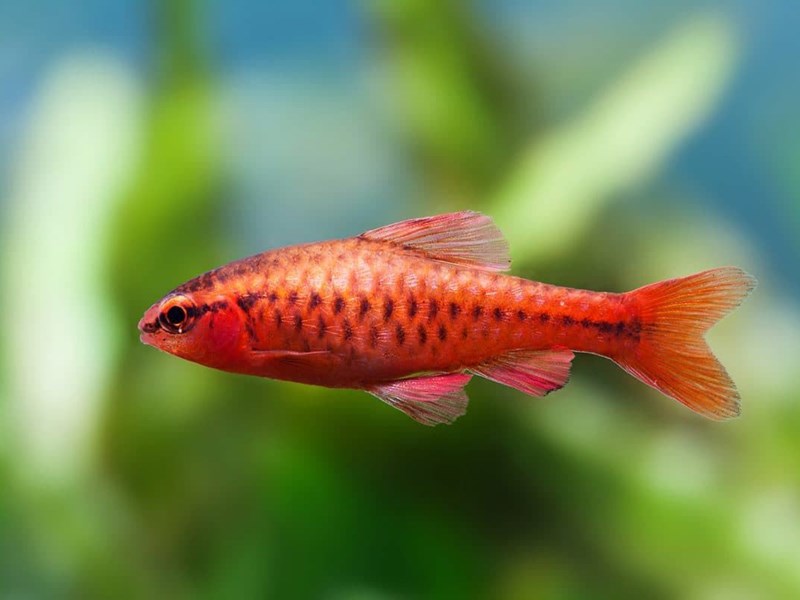
AT GLU GLU PET WE ADVISE YOU THE BEST FOR YOUR CHERRY BARB:
The cherry barbel is a fish from Sri Lanka that gets its name due to its intense red color, especially in males during the breeding season, giving our planted aquariums a beautiful green / red color contrast.
Common name: Cherry barb.
Scientific name:Puntius titteya .
Family: Cyprinidae.
Temperature: 23 – 27 ºC (optimal 26ºC).
Maximum size: 5cm.
pH: 6.0 – 8.0.
Kh: 6.0 – 10.0ºKh.
Gh: 5 – 19ºGh.
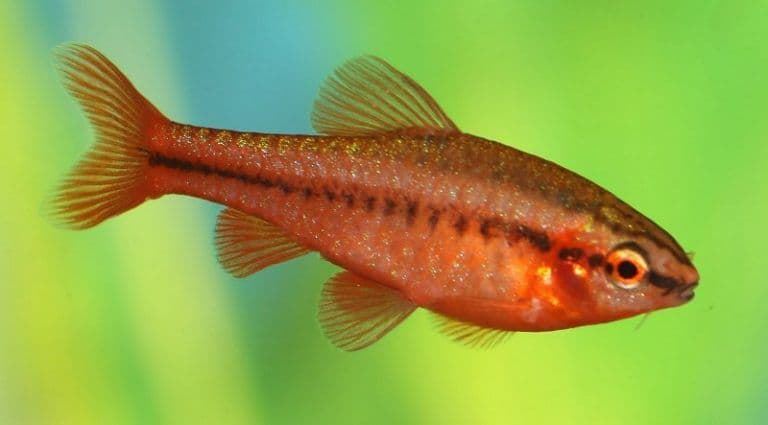
The Cherry Barbel or Barbus titteya, is one of the most common and favorites of aquarists who love oviparous fish. Not in vain does it come from a very common family in aquariums, the Cyprinids.
We would highlight its attractive coloration and the fact that it is a fish that can live an average of about 4 years.
Its name, Cherry Barbel, is due to the spectacular cherry red coloration, which the males adopt during the spawning period.
It is a suitable fish for a not very large aquarium, since it measures only about five centimeters when it reaches its adult state.
The female has a coloration that goes from dark brown to light.
The two specimens are crossed by a dark longitudinal band, which runs from the mouth to the tail.
Another difference with the males is that they are somewhat more rounded.
Its ventral area is lighter, white-yellowish.
FOR THEIR BEST CARE YOU HAVE TO KNOW HOW THEY LIVE IN FREEDOM:
They are native to and endemic to Sri Lanka, where they can be found in streams and small rivers (Kelani and Nilwala) with abundant vegetation and decaying material.
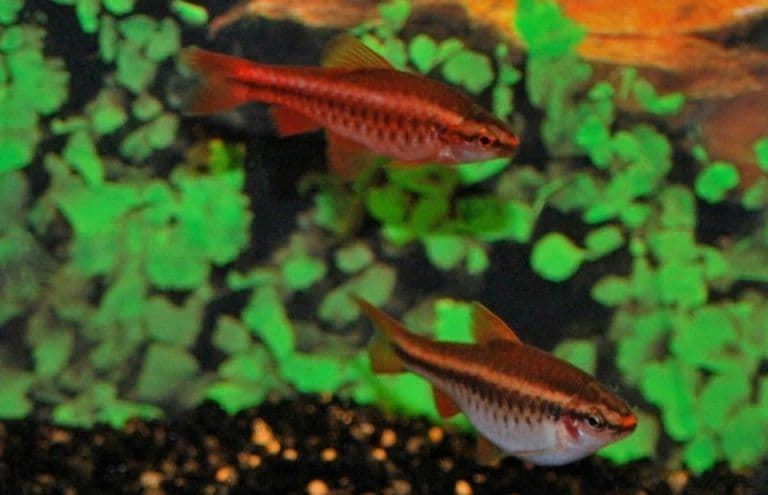
TO PUT THESE FISH WITH OTHERS IN THE SAME AQUARIUM YOU MUST KNOW THE FOLLOWING TIPS:
They need an aquarium with an abundance of vegetation and floating aquarium plants, where we should ensure a temperature between 20ºC and 28ºC, with a water pH between 6.5 and 7.5.
The size of the aquarium can be about 80 liters, with a bottom of fine sand.
If we put the background in dark tones, the beauty of the Cherry Barbel will be more highlighted.
The decoration is not too important, although they appreciate that we place some roots or trunks floating, if we do not add floating plants.
They like that there is movement of water in the aquarium, it reminds them a lot of the currents of their rivers of origin.
A good idea would be to place an external filter in the aquarium with a lot of power.
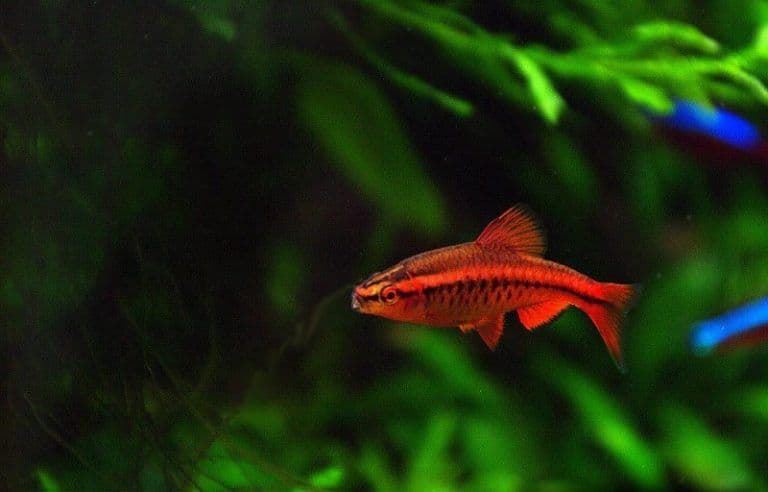
THE BEST NUTRITION FOR YOUR CHERRY BARB IS:
They are omnivores, they will accept all kinds of dry artificial food, although we must provide them with live prey based on small insects and worms, especially during the breeding season.
It will accept Daphnias or Artemia without problems, although it is convenient to complete its diet with vegetable foods, such as algae and if we do not have on hand, chard and spinach.
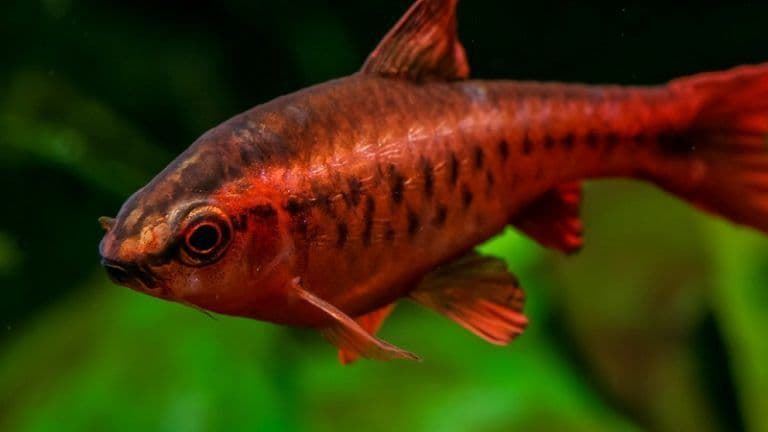
FOR YOUR BETTER CARE, YOU MUST KNOW HOW YOUR BEHAVIOR IS WITH OTHER FISH:
The Cherry Barbel is a quiet fish, under certain circumstances.
If we raise a single Cherry Barbel inside the aquarium, it will become aggressive.
It prefers to live with more specimens of its species, ideally in groups of 3 to 6 specimens, where we will keep a single male, if the aquarium is not very large, to avoid territorial fights.
Contrary to what happens with other Barbels, it does not usually bother the rest of the species in the aquarium.
Fish compatible with Cherry Barbel:
- Tiger Barb.
- Guppies.
- Guppy Endler.
- Tetra Neon.
- silver dollar.
- Rasbora Galaxy.
- Platy.
- Ancistrus.
- Boraras.
- Harlequin.
- drunk.
- Corydora.
- Nun.
- Ax Fish.
- Chinese neon.
- Apple Snail.
- Zebra fish.
- Ramirezi.
- Otocinclus.
Fish compatible with restrictions:
- Rainbow.
- Discus fish.
- Silver Dollar.
- Freshwater puffer fish.
- Common pleco.
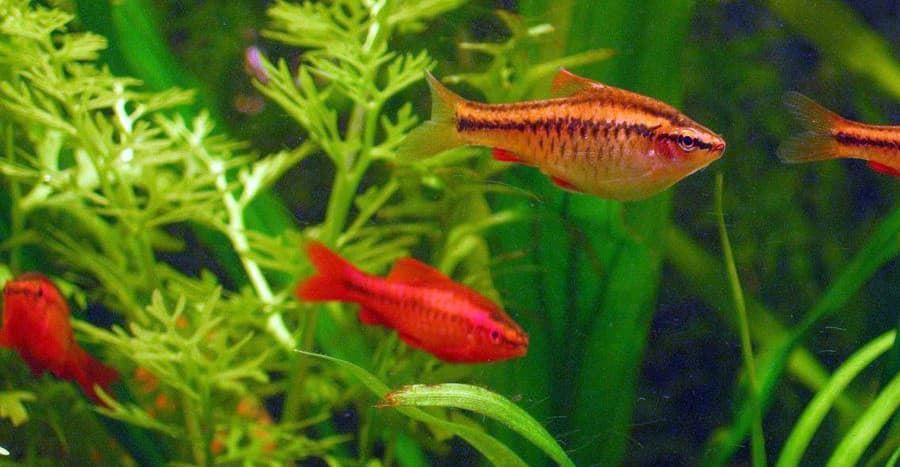
FOR A SIMPLE REPRODUCTION IN THE AQUARIUM, FOLLOW THESE TIPS:
Its reproduction in the aquarium is relatively simple, as long as we create the right conditions:
- They are more likely to start the breeding period, with a temperature between 22ºC and 24ºC.
- The water should have a slightly acidic pH, close to neutral.
- They are not fish that care much about their eggs.
- If we want to control the process, we should get a somewhat smaller aquarium or a breeding aquarium.
- The lighting should be poor, and a mesh should be provided for the bottom of the aquarium, so that we prevent the eggs that reach the bottom of the aquarium from being devoured by the adults.
- If we keep them in the usual aquarium, they will lay their eggs on plants with fine leaves.
- In this case, we must weigh whether it is a good idea to keep the adults, once spawning has occurred, since if they have a chance they will eat the eggs.
- The eggs will hatch between 24 and 48 hours after laying.
- The fry must be fed with infusoria, until they can start eating Artemia nauplii, or similar foods.

